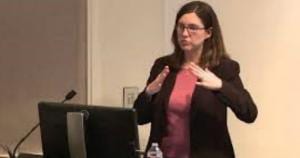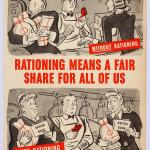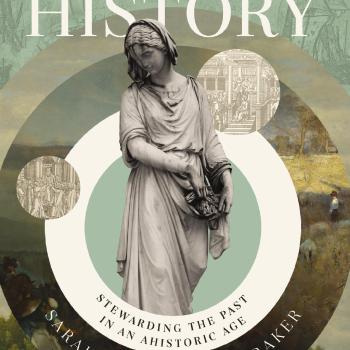By Elesha Coffman, Baylor University
In this semester of Coronavirus, we professors who are accustomed to face-to-face teaching have to think hard about what we did in the classroom and how to translate that work into an online environment. In a previous job, I taught in-person and asynchronous online sections of the same class during the same semester, so I’ve had a bit more time to ponder this than many of my colleagues. During that earlier experience, I came to think of in-person teaching as akin to live theater, but not for the reasons that come most readily to mind. Consequently, I believe that teaching online, which is more akin to TV or movie production, poses formidable pedagogical challenges—but, again, not for the reasons that come most readily to mind.
Teaching a class, whether in person or via video, is a performance. Voice projection, body language, and set design all matter. There can be stage fright. In person, the teacher can read students’ reactions and use that feedback, and that energy, to fuel the presentation. Neither the feedback nor the energy conveys as well on-screen, which leaves many people who got a charge out of in-person teaching depleted by the online simulacrum. There’s a “collective effervescence” in the classroom that no Zoom meeting can replicate. This is all significant, but—at least for an introvert like myself—it is not the most significant way in which online teaching differs from the in-person variety.
When I say that face-to-face teaching is like live theater, I’m thinking of production values, “Flying by Foy” versus CGI. The amateurish, cobbled-together clunkiness that mars so much of our online teaching is, I believe, what makes our in-person teaching successful.
“Flying by Foy” is the company founded by stage-effects specialist Peter Foy (1925-2005), who, among other accomplishments, made Peter Pan fly on Broadway. He used harnesses, wires, pulleys, and pendulums to create a credible appearance of flight, but his systems were never invisible. A sharp-eyed audience member could spot the moving parts and guess how the tricks were done. Often, I would imagine, this ability enhanced rather than detracted from a spectator’s enjoyment of the performance. There is awe in watching a fellow human seemingly defy the laws of gravity, but there is also delight in the dawning realization, “Oh, I see how they did that.”
Computer-Generated Imagery (CGI) produces very different responses from viewers. There are no wires or pulleys visible, and often very little that is recognizably human. The visuals are successful to the extent that they are polished and seamless. Only someone with extensive graphic-design proficiency could begin to imagine how the effects were produced. No one else gets the frisson of realizing, “Oh, I see how they did that.” That kind of participation, of imagining how one could recreate what is seen, would interrupt the suspension of disbelief and likely ruin the experience.
Online teaching (particularly but not exclusively of the MOOC variety) is like CGI in that its success is tied to production values. For most of us, watching our home-recorded lectures produces more cringes than delight. We’re trying our best, but when students grumble or don’t watch or (we suspect) start the video and then leave the room, we can’t entirely blame them. Instead of recording any lectures this strange half-semester, I repurposed existing, well-produced video content instead, for precisely this reason. My non-existent video editing skills can’t compete with John Green’s “Crash Course” series, so it didn’t seem worth my time to try. I don’t judge any instructor who made a different choice, I just could not bring myself to talk to my screen, knowing how unsatisfying the resulting video would be.
In the classroom, low production values operate very differently. I don’t mean that a mumbled lecture or ugly PowerPoint is better than an audible, aesthetically pleasing version of the same. We try our best in the classroom, too. But whether our teaching persona is more “sage on the stage” or “guide on the side,” or some mix of both, we do whatever we do live, unedited, no post-production. The wires and pulleys are on display for all to see.

Yes, we train and practice for this. Yes, we are the experts, and if we traded places with a student, the educational quality would go down. Teaching is a performance, and the gifts of the performer matter. But a sharp-eyed student can see the moving parts of our lessons, can glimpse the disciplinary methods that support intellectual flight, can—if we’re doing our job well—imagine how they could recreate what they’re seeing. In the low-tech, face-to-face setting, a student is not just learning history, or sociology, or mathematics, but how to be a historian, a sociologist, a mathematician. “Oh, I see how they did that,” the student realizes, “and I bet I could do it, too.”
It’s not impossible to bring students to “I bet I could do it, too” awareness through online learning. It’s just a lot harder, and the better (by most metrics) we get at conveying content online, the harder it is for students to see the wires and imagine themselves in flight. So perhaps the question for online instructors is less “how can I make this smoother?” and more “where can I let the scaffolding show?”
Talk about method. Talk about how what you’re doing online isn’t what you usually do, and what you think is lost (or gained) in the transfer. Talk about what it’s like to perceive the world as a historian, a sociologist, a mathematician, in this moment. What are you reading? What are you wondering? What are you worried about? What were you recently amazed to discover? What did you previously think that has since been proven wrong? You know, the stuff you used to say off-the-cuff in class, that wasn’t on the PowerPoint. The stuff that would never survive post-production edits on a video meant to be used over and over and over, as if your academic discipline were a static, unchanging thing severed from its historical context.
By all means, produce materials you can use again, if possible. You may well need them in the fall or beyond. Just don’t hide all the wires and pulleys. Your students need them, more than they know.













